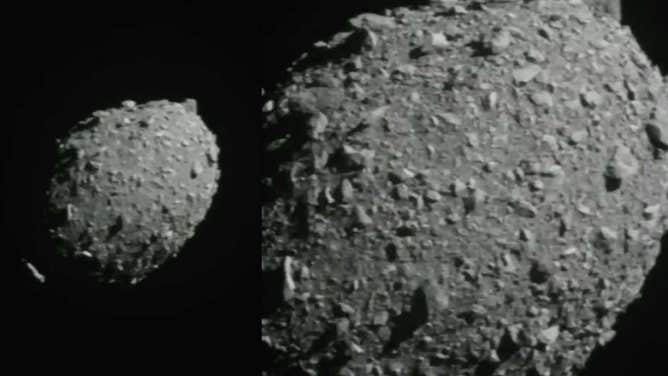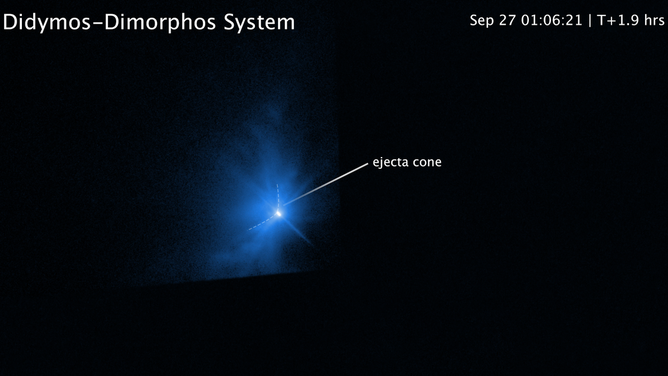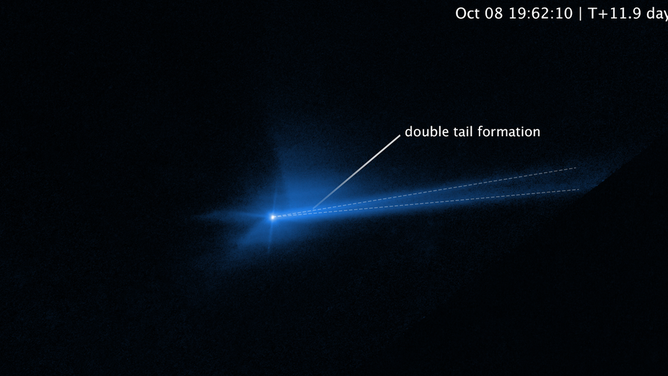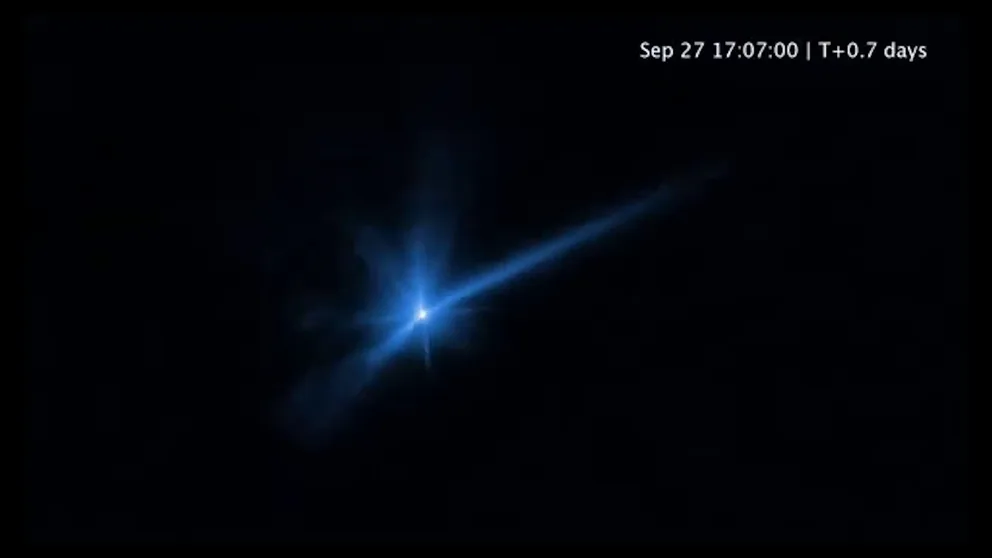Watch: New video from Hubble space telescope captures asteroid-smashing debris from successful DART mission
The Double Asteroid Redirection Test (DART) mission involved slamming a 1,200-pound spacecraft about the size of a vending machine into an asteroid at 13,000 miles per hour.
Watch: New video shows DART asteroid impact debris from Hubble space telescope
A video NASA released on Wednesday shows the debris caused by the Double Asteroid Redirection Test (DART) mission spacecraft slamming into the asteroid Dimorphos. (Courtesy: NASA / ESA / STScI / Jian-Yang Li (PSI) / Joseph DePasquale (STScI))
A video NASA released on Wednesday shows the debris caused by the Double Asteroid Redirection Test (DART) mission spacecraft slamming into the asteroid Dimorphos.
DART’s primary objective was to test whether an asteroid’s trajectory could be changed, should one ever become a threat to Earth. The moment of truth occurred on Sept. 26, 2022.
The test resulted in DART, a 1,200-pound spacecraft about the size of a vending machine, successfully shifting the path of the asteroid after slamming into it 13,000 miles per hour.
SMASHING SUCCESS: NASA'S FIRST PLANETARY DEFENSE TEST CHANGES ASTEROID'S ORBIT BY 32 MINUTES

Asteroid Dimorphos as seen by NASA's DART spacecraft seconds before impact.
(NASA / JHUAPL / NASA)
The aftermath of that moment was captured by NASA’s Hubble Space Telescope, which was positioned in a low-Earth orbit about 7 million miles from the asteroid.
A series of snapshots from Hubble shows three stages of this aftermath, according to NASA.
The first stage occurred about two hours after the collision. An image shows the formation of an ejecta cone, or debris material kicked up from the collision that forms a conical shape.

Stage 1 of the aftermath
(NASA / ESA / STScI / Jian-Yang Li (PSI) / Joseph DePasquale (STScI) / NASA)
The second stage occurred about 17 hours after impact, NASA said. An image shows the shape of the ejecta cone being transformed into a spiral swirl due to the gravitational pull of a companion asteroid.

Stage 2 of the aftermath
(NASA / ESA / STScI / Jian-Yang Li (PSI) / Joseph DePasquale (STScI) / NASA)
The third stage involves the debris being swept back into a comet-like tail. Caused by the pressure of sunlight, NASA described the debris shape as resembling a windsock caught in a breeze.

Stage 3 of the aftermath
(NASA / ESA / STScI / Jian-Yang Li (PSI) / Joseph DePasquale (STScI) / NASA)
The DART mission was the first of its kind. According to NASA, no other mission was dedicated to investigating and demonstrating one method of asteroid deflection by changing an asteroid’s motion in space through kinetic impact.
